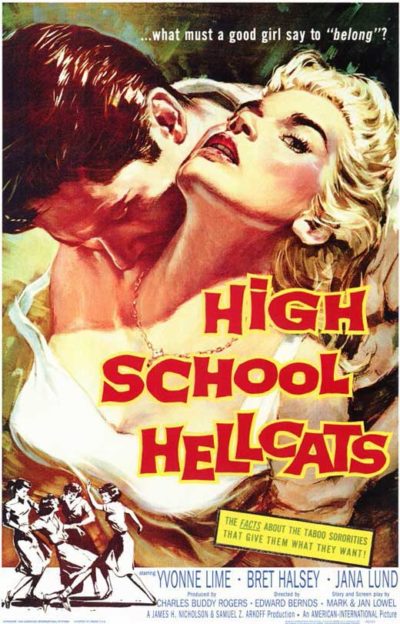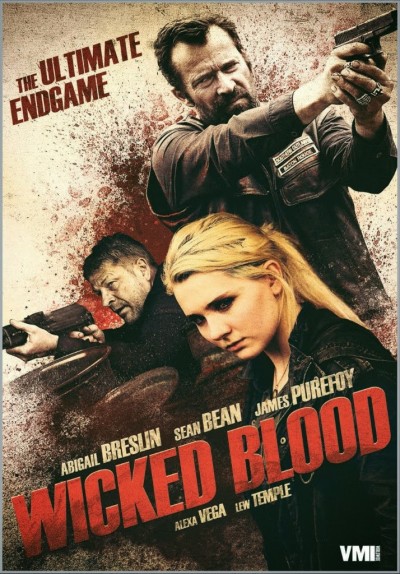★★★★
“Where eagles dare.”
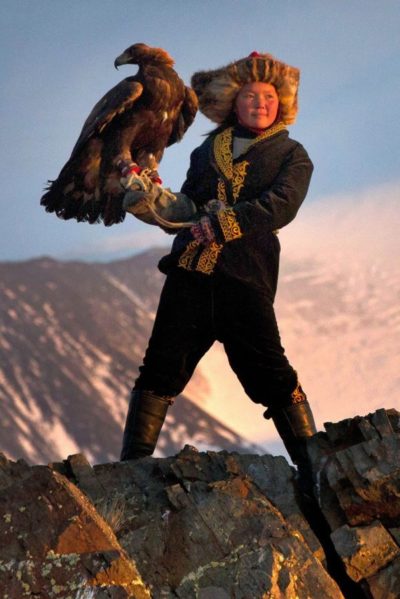
 No matter how bad-ass you are, you’ll never attain “13-year-old Mongolian girl, standing astride a mountain, holding the trained golden eagle she raised from a chick, after climbing down a cliff to get it” levels of bad-ass. That’s what we have here, folks, in this documentary about Aisholpan. She’s a Mongolian teenager who wants to become an eagle huntress, a profession traditionally reserved for the male lineage. Her father Rys learned the skills necessary (and, presumably, inherited the really large, very well-padded glove) from his father, and so on.
No matter how bad-ass you are, you’ll never attain “13-year-old Mongolian girl, standing astride a mountain, holding the trained golden eagle she raised from a chick, after climbing down a cliff to get it” levels of bad-ass. That’s what we have here, folks, in this documentary about Aisholpan. She’s a Mongolian teenager who wants to become an eagle huntress, a profession traditionally reserved for the male lineage. Her father Rys learned the skills necessary (and, presumably, inherited the really large, very well-padded glove) from his father, and so on.
In the absence of a suitably-aged son, and given Aisholpan’s interest, Rys is happy to show her the ropes. Literally. As in the ones used to prevent her falling off the steep cliff-face she has to descend to pluck her eaglet from its home. For, as we learn, there’s only a brief period between the chicks being able to survive away from their mother, and them leaving the nest, during which they can be taken. We also discover, there’s apparently no word in Mongolian for “child endangerment.” There’s then the training process, as the bird grows up, for instance to get it to come when called. Though “politely asked” would be wiser than “called”. You don’t order around something like the full-sized and scary creature shown on the right.
The first dramatic moment is Aisholpan’s participation in the annual golden eagle festival, which takes place in a nearby (by Mongolian standards – it’s only a day’s ride away) town. She’s not only the youngest participant, she’s the first woman ever to take part. Some of the veterans and elders are interviewed, and are not exactly happy about it. Though their opposition doesn’t appear to go any further than mild levels of harumphing; it’s not as if there’s any active attempt to stop her participation. This could be because the film does seem to over-state Aisholpan’s uniqueness for the sake of cinematic drama. History actually provides much evidence for her female predecessors.
However, there’s still an enormous amount here to appreciate and enjoy, not least a plethora of panoramas, sweeping across the staggeringly beautiful Mongolian plains. You also get a new respect for eagles, creatures whose size is not apparent in the air, and only when you see one perched on the heroine’s arm, it’s razor-sharp beak inches from her eye. Then there’s Aisholpan herself, who clearly gives not one damn for any constraints “tradition” might want to place on her, and goes about her eagle-training business with an infectious smile. Oh, and she’s studying to be a doctor when she grows up. If she went on her rounds with an eagle on her arm, so much the better, I’d say.
Finally, we get to bask in the gloriously stunned silence of the elders, after Aisholpan has demonstrated her skills (and, admittedly, those of her avian familiar) at the tournament. They then point out that, well, anybody – even a girl – can do well enough in the comfortable setting of a field. She could never withstand the harsh conditions faced by real hunters, in the mountains. Guess where Aisholpan’s next stop is? Yep. She takes her bird and heads off into those mountains, through snowdrifts which reach up to the flank of her horse, to hunt foxes for their fur. In terms of teenage empowerment, it sure beats getting a tattoo and hanging out at the mall.
Dir: Otto Bell
Star: Aisholpan Nurgaiv, Rys Nurgaiv, Daisy Ridley (narrator)





 ★★½
★★½ Admittedly, Juliane Koepcke was not your average teenager. Indeed, she could hardly have been better prepared for her ordeal. Her family moved to a research station in the Peruvian rainforest when she was 14, so her father, zoologist Hans-Wilhelm Koepcke, could continue his work. Juliane was initially home-schooled, and the curriculum covered much more than the traditional three R’s.
Admittedly, Juliane Koepcke was not your average teenager. Indeed, she could hardly have been better prepared for her ordeal. Her family moved to a research station in the Peruvian rainforest when she was 14, so her father, zoologist Hans-Wilhelm Koepcke, could continue his work. Juliane was initially home-schooled, and the curriculum covered much more than the traditional three R’s.  The authorities hadn’t been able to locate the crash site, but with Juliane’s help, they found it, and her mother’s body was eventually recovered on January 12, more than three weeks later. The
The authorities hadn’t been able to locate the crash site, but with Juliane’s help, they found it, and her mother’s body was eventually recovered on January 12, more than three weeks later. The 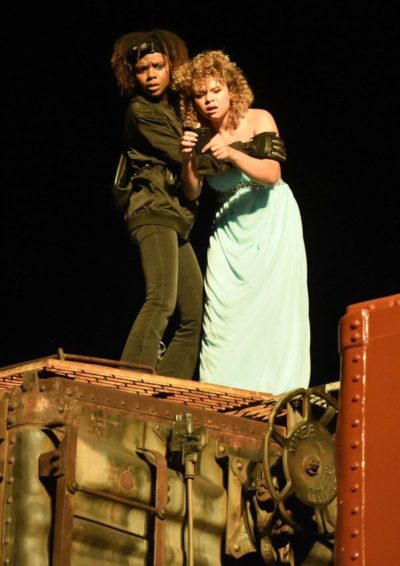 After their mother has a meltdown at her job and ends up in jail: teenage sisters Deidra (Murray) and Laney (Crow, somewhat infamous for her post-elimination meltdown on The X Factor) are left to fend for themselves. With household bills piling up – never mind trying to fund Mom’s bail, or even Deidra’s long dreamed-of college tuition – and Child Protective Services looming, things look bleak. But a visit to deadbeat Dad Chet (Sullivan, channeling David Spade), who works for a railway company, gives Deidra an idea. Hop aboard the freight trains that run by the back of their house, pop open a container to take some goods, and fence them on for cash. Things go surprisingly well, until a disgruntled railroad cop, Truman (Nelson), starts to close in on the pair, intent on rebuilding his reputation after an incident in Arizona.
After their mother has a meltdown at her job and ends up in jail: teenage sisters Deidra (Murray) and Laney (Crow, somewhat infamous for her post-elimination meltdown on The X Factor) are left to fend for themselves. With household bills piling up – never mind trying to fund Mom’s bail, or even Deidra’s long dreamed-of college tuition – and Child Protective Services looming, things look bleak. But a visit to deadbeat Dad Chet (Sullivan, channeling David Spade), who works for a railway company, gives Deidra an idea. Hop aboard the freight trains that run by the back of their house, pop open a container to take some goods, and fence them on for cash. Things go surprisingly well, until a disgruntled railroad cop, Truman (Nelson), starts to close in on the pair, intent on rebuilding his reputation after an incident in Arizona. If you want something more cerebral and family friendly than
If you want something more cerebral and family friendly than 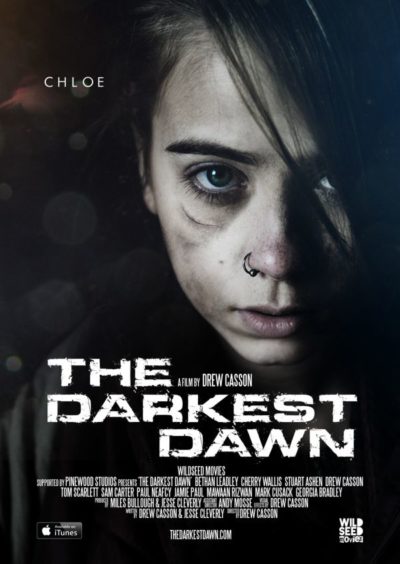 This is apparently a sequel to a previous movie about an alien invasion of Earth (and, specifically, the United Kingdom) from the same director, Hungerford. While I haven’t seen it, this likely didn’t impact things too much here; I sense it’s perhaps closer to a separate story, unfolding in the same universe, than a true sequel. It’s the story of teenage sisters Chloe (Leadley) and Sam (Wallis), with the former getting a video camera for her birthday – just in time for said invasion to kick off, with their family being separated in the ensuing chaos. Toting her camera, Chloe and her sibling take shelter, then scurry through the blasted landscape, facing the threat not just of the extra-terrestrials, but renegade bands of survivors. For it also turns out Chloe, specifically her blood, is a key to the resistance. What are the odds?
This is apparently a sequel to a previous movie about an alien invasion of Earth (and, specifically, the United Kingdom) from the same director, Hungerford. While I haven’t seen it, this likely didn’t impact things too much here; I sense it’s perhaps closer to a separate story, unfolding in the same universe, than a true sequel. It’s the story of teenage sisters Chloe (Leadley) and Sam (Wallis), with the former getting a video camera for her birthday – just in time for said invasion to kick off, with their family being separated in the ensuing chaos. Toting her camera, Chloe and her sibling take shelter, then scurry through the blasted landscape, facing the threat not just of the extra-terrestrials, but renegade bands of survivors. For it also turns out Chloe, specifically her blood, is a key to the resistance. What are the odds? After I watched the first episode of this show, I was sure it was a delicious parody of anime shows, particular the “super-powered high-school” genre. It seemed to be taking the concepts of shows such as Sailor Moon, say, and ramping everything up to 11. The violence, in particular, is somewhere beyond Dragon Ball Z in terms of excess, except with copious additional amounts of arterial spray – though people survive far beyond the point at which any normal person would be a desiccated husk. I mean, just look at that heroine’s outfit on the right. They cannot be serious, can they? But the longer this went on… the less sure I was whether it
After I watched the first episode of this show, I was sure it was a delicious parody of anime shows, particular the “super-powered high-school” genre. It seemed to be taking the concepts of shows such as Sailor Moon, say, and ramping everything up to 11. The violence, in particular, is somewhere beyond Dragon Ball Z in terms of excess, except with copious additional amounts of arterial spray – though people survive far beyond the point at which any normal person would be a desiccated husk. I mean, just look at that heroine’s outfit on the right. They cannot be serious, can they? But the longer this went on… the less sure I was whether it 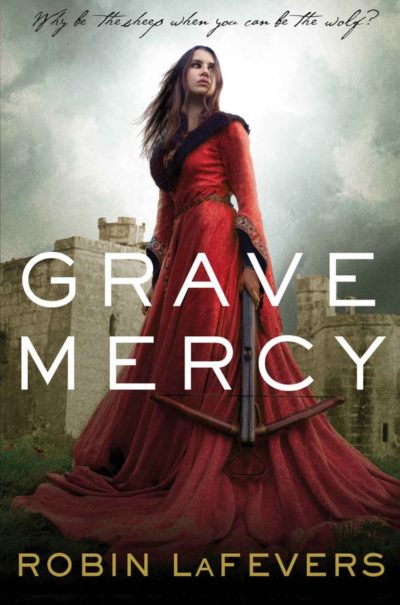 This works rather better as historical fiction than an action novel, and is set in the late 15th century, when the province of Brittany was fighting to remain independent from France. Such high-level political machinations are far above the heads of most inhabitants, who are busy with everyday survival. At the beginning of the book, this includes the heroine, 17-year-old Ismae, who is more concerned about her upcoming, unwanted marriage – more of a sale by her father, to be honest – to a brutal husband. Rescue comes in an unexpected form, as she is whisked away to the Convent of St. Mortain, devoted to one of the pagan gods, absorbed into the Catholic faith as a saint. Mortain’s field is death, and Ismae, who has a natural immunity to poison, is trained in his dark arts. She becomes a tool used by the Mother Superior – albeit for political ends as much as religious ones.
This works rather better as historical fiction than an action novel, and is set in the late 15th century, when the province of Brittany was fighting to remain independent from France. Such high-level political machinations are far above the heads of most inhabitants, who are busy with everyday survival. At the beginning of the book, this includes the heroine, 17-year-old Ismae, who is more concerned about her upcoming, unwanted marriage – more of a sale by her father, to be honest – to a brutal husband. Rescue comes in an unexpected form, as she is whisked away to the Convent of St. Mortain, devoted to one of the pagan gods, absorbed into the Catholic faith as a saint. Mortain’s field is death, and Ismae, who has a natural immunity to poison, is trained in his dark arts. She becomes a tool used by the Mother Superior – albeit for political ends as much as religious ones.